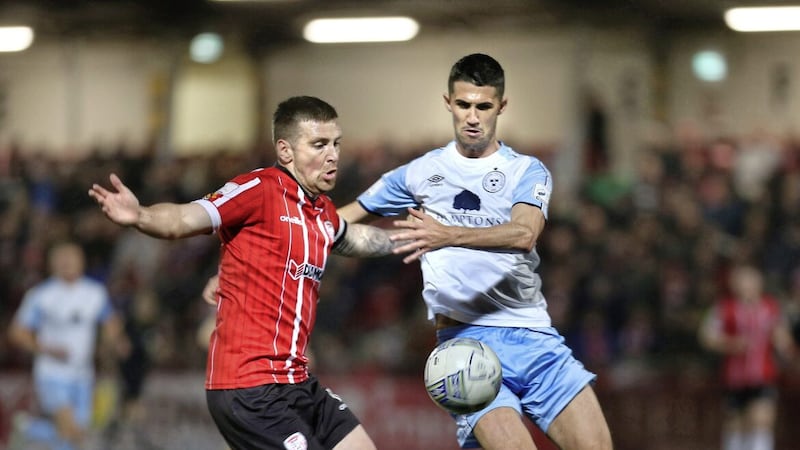THE Paris Olympics have already kicked off and will continue until August 11. We will have to wait until next Friday before the athletics programme gets under way.
The Games mark an important milestone in Irish sporting history with it being 100 years since Ireland first competed as a nation in the modern Olympiad. Before that Irishmen brought much success to Britain, the USA, Canada and even South Africa but not the Emerald Isle.
The Irish Olympic Council had only been admitted to the International Olympic Committee following the Irish Free State’s independence from the United Kingdom.
Much credit has to go to the Irish Olympic Council’s president John James Keane who lobbied long and hard for Ireland to be admitted.
Significantly, the council saw itself from the outset as an All-Ireland body including the newly-founded Northern Ireland.
It competed in Paris as Ireland (Irlande) and not the Irish Free State. That principle has applied right through to the present day with the team in Paris representing all 32 counties, unlike Ireland teams at European and World Athletics Championships which adhere to political boundaries.
The team of 100 years ago used the tricolour as its flag with its adopted anthem being Let Erin Remember.
The football team comprised of amateurs played in blue shirts with a green shamrock set against a white background. It did not contain any northern representatives nor did the boxing squad which was made up almost entirely of Army boxers.
Unfortunately, apart from the achievement of being there, Ireland could not claim much other success with its only medals coming from non-athletic events.
Jack Butler Yeats won a silver medal for his painting The Liffey Swim and Oliver St John Gogarty was awarded a bronze medal for his poem Tailteann Ode which he described years later as being “rather tripe”.
Not a single person in the athletics team reached a final due to “technical factors and cruel fate” according to the contemporary press.
Larry Stanley in the high jump and Paddy Bermingham in the discus were considered genuine medal hopes but failed on the big occasion.
JJ Ryan was unfortunate to run into temperatures approaching 40 degrees during the cross country and failed to finish.
It was reported: “The technique of the weight events was something the Irish entrants were lacking in; (John) O’Grady, for one, admits that he only learned from McDonald and McGrath (Irish-Americans) – too late – the real method of success in the shot event”.
There was only one member of that athletics team who had any connection with the north. Known as John Connor in Northern Ireland, Jack O’Connor was born in Co Kerry on August 1 1894. He joined the Royal Irish Constabulary on December 16 1913 and served in Clare and Dublin before the force was disbanded in 1922.
He then joined the newly formed Royal Ulster Constabulary and spent almost 30 years in the force before retiring as a head constable, a now defunct rank between constable and sergeant, at the end of July 1951.
There was always an interest in sport as long as anyone can remember in O’Connor’s native parish, particularly running, jumping and cycling.
It was considered a great feat to leap across the River Giddagh at Jimmy O’Shea’s field, a distance of 24 feet (7.31m). The reason the jump was so difficult was that the jumper had to take off in a lios (ringfort) situated on the farm of Jimmy O’Shea and had to negotiate two small mounds before taking off, limiting it to a very short run-up.
The jump was west to east and for years only one man, Bulker Doyle, succeeded in doing it. The record stood until John Connor did the jump after some failures in 1918. It seems it has not been attempted since. The place is about 300 metres south of Giddagh Bridge.
Connor was a member of North Belfast Harriers, better known as a cross country club at the time. He was selected to represent Ireland after the 1924 Irish Championships at Croke Park where he won the hop, step and jump (triple jump) with a best effort of 14.09m.
The men’s triple jump was held on July 12 at the 1924 Olympics and there were 20 entrants from 12 nations. The event was won by Nick Winter of Australia with Connor failing to progress beyond the preliminary round after achieving a best effort of 13.99m. Only six advanced to the final with O’Connor’s mark ranking him 10th overall.
After his retirement he moved from Antrim town to Dublin and lived at Dangan Drive, Kimmage Road West. He took ill and died suddenly on October 10, 1977 at the Meath Hospital.
His wife Margaret (née O’Connor) died 16 days later. They had five children and 14 grandchildren. He is interred in Rooskey Cemetery, Dunboyne, Co Meath.
Ireland had to wait for a first medal until Dr Pat O’Callaghan won the hammer in the 2028 Amsterdam Olympic Games.
It is 12 years since we won an athletics medal – let us hope the class of 2024 do not make us wait any longer.


